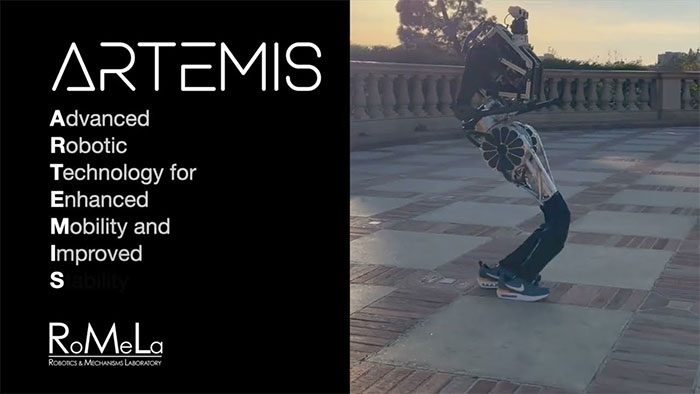A research team at the University of California, Los Angeles, has developed a humanoid robot capable of moving at a speed of 2.1 m/s with exceptional balance.

The Samueli School of Engineering at UCLA has developed an advanced humanoid robot named Advanced Robotic Technology for Enhanced Mobility and Improved Stability (ARTEMIS). This robot is set to compete in a soccer match at the RoboCup event in Bordeaux, France, in July of this year, according to a university announcement on March 10.
Dennis Hong, a professor of mechanical and aerospace engineering at UCLA, highlights the robot’s remarkable balance on uneven terrain and its ability to run on two legs as key achievements in this research. The secret lies in the actuators, which are specially designed to function like biological muscles. Unlike the rigid actuators commonly used in most robots, these are elastic and capable of force control.
ARTEMIS has been developed as a versatile humanoid robot by the research team at UCLA’s Robotics and Mechanisms Laboratory (RoMeLa), focusing on bipedal movement on rough terrain. The robot prototype can sprint, jump, and walk on unstable surfaces. It stands 143 cm tall and weighs 38.5 kg. Even when pushed or disturbed, ARTEMIS can maintain its balance. According to the research team, ARTEMIS is programmed to walk at 2.1 m/s during laboratory tests, making it the fastest humanoid robot in the world.
The actuators of ARTEMIS are electrically powered instead of hydraulic. Hydraulic systems often leak fluid, making this design cleaner, quieter, and more efficient. Researchers are currently testing ARTEMIS on regular walks around the UCLA campus to prepare for RoboCup. They will conduct thorough assessments of the robot’s running and soccer-playing capabilities in the coming weeks.
RoboCup is an international scientific conference where robots showcase their abilities in various categories.
ARTEMIS in motion on campus. (Video: UCLA)


















































